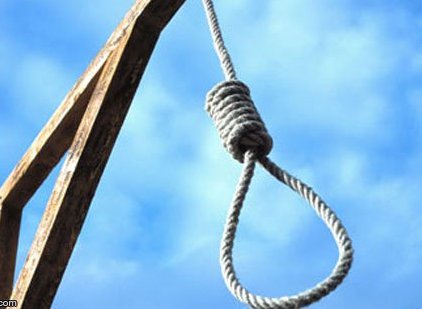- 1. National context
- The 1987 Constitution of the Philippines prohibits the use of the death penalty by stating ‘the death penalty shall not be imposed unless for compelling reasons involving heinous crimes, the Congress hereafter provides for it. Any death penalty already imposed shall be reduced to reclusion perpetua’.[1]
- In December 1993,President Ramos’ administration re-imposed the death penalty under Republic Act (RA) 7659 adopted by Congress. The law listed a total of 46 crimes punishable by death. Over the years, a number of new RAs and amendments to existing ones (8177, 8353 and 9165) further defined those acts punishable by death resulting in 52 capital offenses, 30 of which were death-mandatory and 22 death-eligible.
- In 1999, President Estrada had seven death-row convicts executed through lethal injection (RA 8177)which was reportedly intended to abate rising criminality. Following strong lobbying by the Catholic Church and human rights groups, President Estrada issued a temporary moratorium in March 2000 to mark the Christian ‘Jubilee Year’.
- President Gloria Macapagal-Arroyo announced the lifting of the de-facto moratorium on executions in December 2003 in response to a reported rise in drug trafficking and kidnapping. Executions were expected to resume in January 2004 when the Supreme Court vacated the decision of the lower court to put to death two death-row inmates following testimonial evidence that exonerated them of their crimes.[2]
- In April 2006, President Arroyo commuted the sentences of 1,230 death row and ultimately signed RA 9346 in June 2006 which abolished the use of capital punishment[3]. Congress had overwhelmingly supported the abolishment of the practice in their vote for the RA earlier that month replacing the death penalty with life imprisonment and reclusion perpetua.
- RA 9346 states, inter alia, ‘The imposition of the penalty of death is hereby prohibited. Accordingly, Republic Act No. Eight Thousand One Hundred Seventy-Seven (R.A. No. 8177), otherwise known as the Act Designating Death by Lethal Injection is hereby repealed, Republic Act No. Seven Thousand Six Hundred Fifty-Nine (R.A. No. 7659), otherwise known as the Death Penalty Law, and all other laws, executive orders and decrees, insofar as they impose the death penalty are hereby repealed or amended accordingly.
- 2. International context
- The Philippines is party to 8 of the 9 core international human rights treaties. The right to life is at the center ofthese international treaties and the Universal Declaration of Human Rights.
- The Philippines has led the way in Asia in prohibiting the use of the death penalty. The 1987 Philippines’ Constitution was the first in Asia to prohibit the use of the death penalty, stating that: ‘the death penalty shall not be imposed unless for compelling reasons involving heinous crimes, the Congress hereafter provides for it.
- The Philippines was one of 104 UN Member States to vote at the 2007 UN General Assembly in favor of a worldwide moratorium on executions in the aim of abolishing the death penalty, and voted in favor of every subsequent death penalty resolution in 2008, 2010 and 2012.[4]
- The Second Optional Protocol to the International Covenant on Civil and Political Rights aimed at the abolition of the death penalty:
- In November 2007 the Philippines ratified and became a State party to the Second Optional Protocol. States who are party to the treaty have a legal obligation to abolish the death penalty within their borders, even in the event of future changes in national legislation. Reintroduction of the death penalty is not allowed for any reason unless a reservationallowing execution "in time of war pursuant to a conviction for a most serious crime of a military nature committed during wartime"[5] was made at the time of ratification which is not the case for the Philippines.
- There is no withdrawal or denunciation mechanism for State’s that are party to the Second Optional Protocol. The absence in the Protocol of a procedural clause for withdrawal means that once a State has ratified the Second Optional Protocol the death penalty can never be reintroduced without violating international law.
- 3. General information on the death penalty
- Killing people through the use of the death penalty is an irreversible act which has wrongfully killed many innocent people across the world. It prohibits the correction of mistakes by the justice system and leaves no room for human error, with the gravest of consequences.Democratic and just societies are, by definition, required to provide due process to people before the law.
- The death penalty often violates the right to equality and non-discrimination. Statistics worldwide have repeatedly demonstrated that the use of the death penalty consistently and disproportionately discriminates against the poor and most marginalized individuals and subsequently results in social injustice.
- There is no credible evidence or recognized research that demonstrates that the death penalty deters crime, including drug offenses, any more than lengthy imprisonment does. It is not the severity of punishment that deters wrongdoers, but its certainty.[6] To curb crime, the focus should be on reforming the justice system, rendering it more effective, while also ensuring that it is humane. Investing in measures to address issues of public security and crime, such as more effective policing, and a fair and functioning criminal justice system is essential for an ethical and justmanagement of crime[7].
- “No judiciary, anywhere in the world, is so robust that it can guarantee that innocent life will not be taken, and there is an alarming body of evidence to indicate that even well-functioning legal systems have sentenced to death men and women who were subsequently proven innocent.”--ZeidRa’ad Al Hussein, United Nations High Commissioner for Human Rights
Important sources on the question of the death penalty that includes opinions and information fromglobal scholars and leaders on this issue:
- http://www.ohchr.org/EN/newyork/Documents/Moving-Away-from-the-Death-Penalty-2015-web.pdf
National paper by the CHR on the death penalty:
- http://www.chr.gov.ph/MAIN%20PAGES/about%20hr/advisories/pdf_files/abolishing%20death%20penalty.pdf
[1] Article III, Section 19 (1)
[2]http://www.chr.gov.ph/MAIN%20PAGES/about%20hr/advisories/pdf_files/abolishing%20death%20penalty.pdf
[3] RA 9346, Section 1
[4] Currently more than 150 UN Member States have either abolished the death penalty or observe a moratorium.http://www.un.org/apps/news/story.asp?NewsID=45305#.V0F_HWdJnIU
[7]http://bangkok.ohchr.org/files/Moving%20away%20from%20the%20Death%20Penalty-English%20for%20Website.pdf, paragraph2 1.3, 2.1, pages 8, 11























